 The Skyline Rail Project: Revolutionizing Rapid Transportation in Honolulu, Hawaii
The Skyline Rail Project: Revolutionizing Rapid Transportation in Honolulu, Hawaii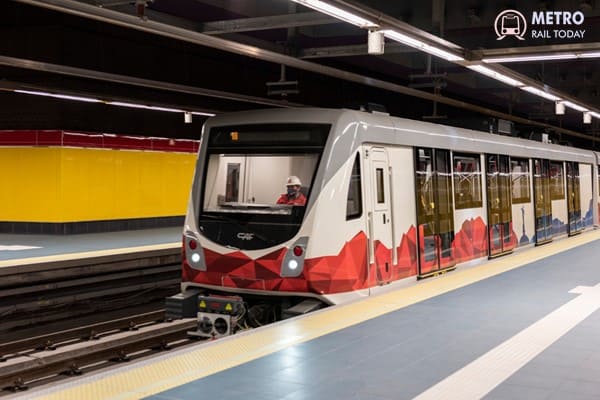 Tender floated for Prague Metro Trains and Automated Train Operation (ATO)
Tender floated for Prague Metro Trains and Automated Train Operation (ATO)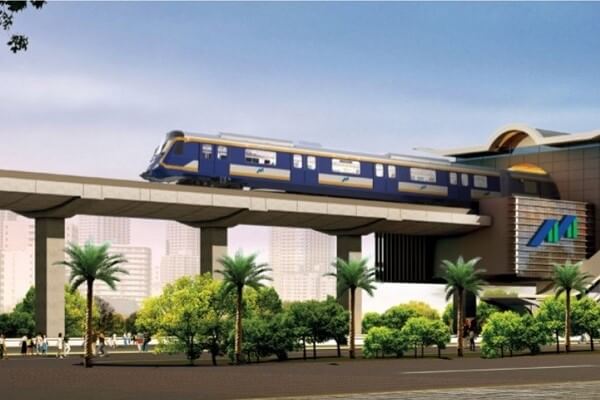 MMRDA floated tender to appoint General Consultants for Mumbai Metro Line 5
MMRDA floated tender to appoint General Consultants for Mumbai Metro Line 5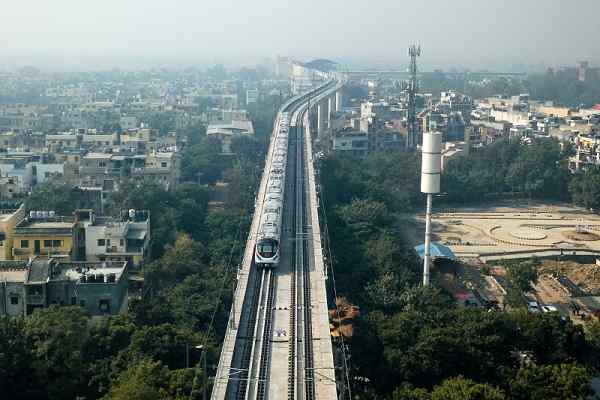 RailTel signs MoU with South African Firms to expand Railway Technology Business
RailTel signs MoU with South African Firms to expand Railway Technology Business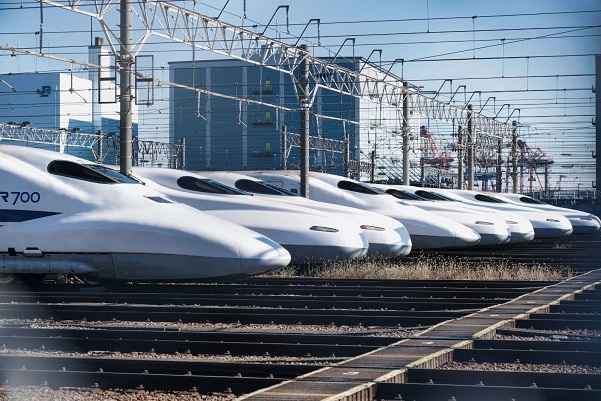 Latest updates on Sabarmati Rolling Stock Depot of Mumbai-Ahmedabad Bullet Train Project
Latest updates on Sabarmati Rolling Stock Depot of Mumbai-Ahmedabad Bullet Train Project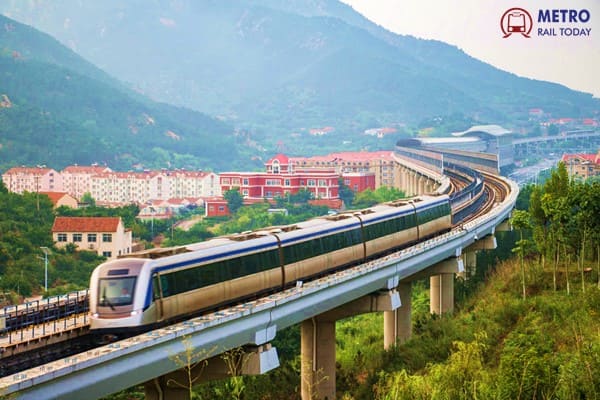 Route survey commences for ₹6,225 crore Bhubaneswar Metro Rail Project
Route survey commences for ₹6,225 crore Bhubaneswar Metro Rail Project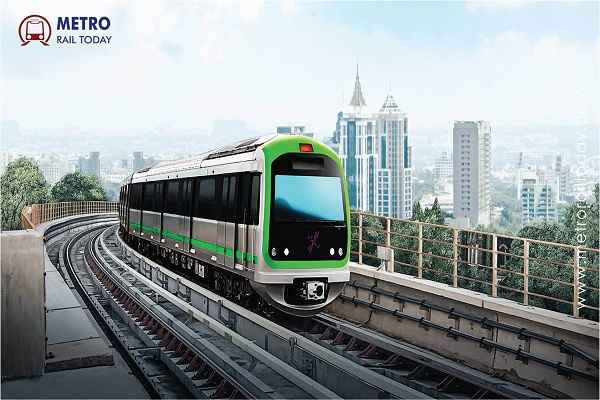 Eight firms bid for feasibility study of Bengaluru's Madavara-Tumakuru Metro Corridor
Eight firms bid for feasibility study of Bengaluru's Madavara-Tumakuru Metro Corridor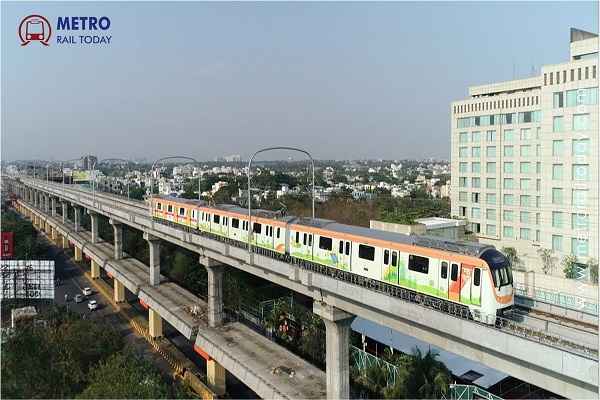 Two firms bid for Track Work Contract of Nagpur Metro Phase 2
Two firms bid for Track Work Contract of Nagpur Metro Phase 2 Derailing Integrity: Corruption Claims Hit Delhi Metro's Top Management
Derailing Integrity: Corruption Claims Hit Delhi Metro's Top Management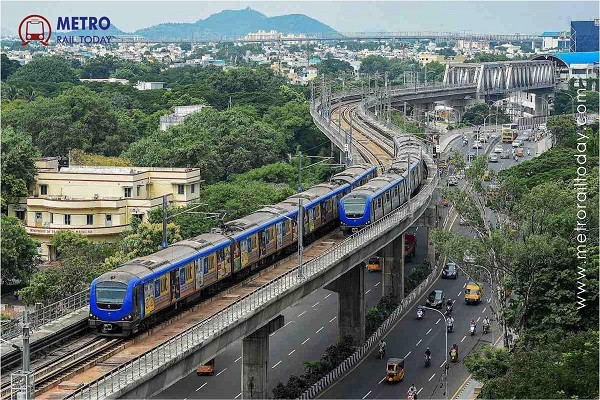 Six firms bid for DPR Consultancy for Chennai Metro's Koyambedu – Avadi Metro Line
Six firms bid for DPR Consultancy for Chennai Metro's Koyambedu – Avadi Metro Line
Unveiling the Macroscopic Impact of Strategic Investments in Metro and MRTS
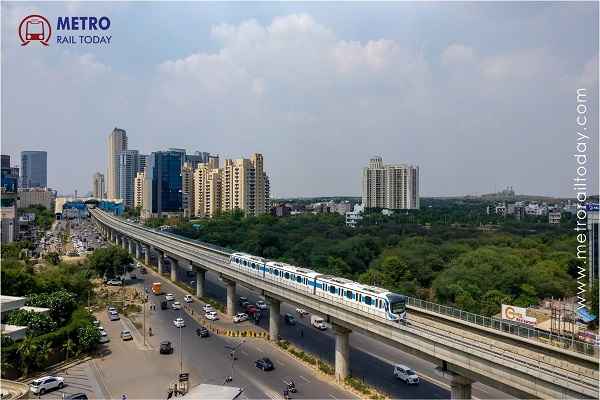
In the bustling heart of every metropolis lies a complex network of transportation arteries, pulsating with the rhythm of urban life. As cities grow denser and populations swell, the need for efficient, sustainable, and inclusive public transit solutions becomes increasingly paramount. Among the arsenal of urban mobility options, Metro and Mass Rapid Transit Systems (MRTS) stand out as pillars of modern transportation infrastructure, shaping the way people move within and across metropolitan regions. The advent of Metro and MRTS systems represents a paradigm shift in urban transportation, offering a departure from reliance on individual automobiles towards collective modes of transit. These systems, characterized by high-capacity trains, dedicated tracks, and frequent service, provide a lifeline for millions of urban dwellers, enabling them to navigate sprawling cities with relative ease. From the iconic underground networks of London and Tokyo to the elevated marvels of New York and Bangkok, Metro and MRTS systems have become emblematic symbols of urban mobility and progress.
However, the significance of Metro and MRTS systems transcends their function as mere conveyors of commuters. Behind the steel tracks and concrete stations lie a multitude of socio-economic, environmental, and spatial implications that shape the fabric of modern metropolises. Strategic investments in Metro and MRTS infrastructure have the power to redefine urban landscapes, catalyse economic growth, enhance social equity, and promote environmental sustainability on a macroscopic scale. Here, we embark on a journey to uncover the transformative effects of strategic investments in Metro and MRTS systems, delving into their macroscopic impact on metropolitan regions around the globe. From the bustling streets of megacities to the tranquil suburbs of burgeoning urban centres, we explore how these investments shape the dynamics of modern metropolises, ushering in an era of mobility, connectivity, and liveability. Join us as we unveil the intricate interplay between public transit infrastructure and the vibrant tapestry of urban life, revealing the profound implications of Metro and MRTS systems on the metropolises in motion.
Navigating the Obstacles: Challenges and Opportunities in Metro and MRTS System Investments
Strategic investments in Metro and MRTS systems promise to revolutionize urban transportation and shape the development of metropolitan areas. However, several challenges stand in the way of realizing their full potential. Foremost among these challenges is the issue of funding and financing, as securing adequate resources for planning, construction, and operation proves to be a daunting task amidst budgetary constraints and competing priorities. Moreover, attracting private investment presents additional hurdles due to concerns regarding profitability and risk. Furthermore, the acquisition of land and securing right-of-way for Metro and MRTS infrastructure presents a complex and time-consuming process, often met with social and political resistance in densely populated urban areas. Technical and engineering challenges also loom large, from navigating geological constraints to ensuring safety and efficiency in design and construction. Integration with existing transport networks, maintaining operational efficiency and addressing social and environmental impacts further compound the complexity of these projects. Nevertheless, with a coordinated and multi-faceted approach involving various stakeholders, strategic investments in Metro and MRTS systems have the potential to foster sustainable development and enhance the quality of life in metropolitan areas.
Seamless Mobility Solutions: Transforming Urban Connectivity with Metro and MRTS Investments
One of the key aspects of strategic investments in Metro and MRTS systems is their profound impact on enhancing connectivity and accessibility within metropolitan areas. These systems serve as vital arteries, seamlessly linking different parts of the city and facilitating the movement of people and goods. By providing fast, reliable, and efficient transportation options, Metro and MRTS systems significantly reduce travel times and improve accessibility to key destinations such as business districts, educational institutions, healthcare facilities, and cultural landmarks. Metro and MRTS networks often consist of multiple lines and stations strategically located across the city, offering passengers a wide range of routes and options to reach their desired destinations. This extensive coverage not only enhances mobility within the urban core but also extends connectivity to suburban areas, thereby fostering integration and cohesion across the entire metropolitan region. Furthermore, Metro and MRTS systems are designed to operate at high frequencies, ensuring that commuters can rely on frequent and regular services throughout the day, thereby reducing waiting times and increasing convenience.
Moreover, Metro and MRTS stations are typically integrated with other modes of transportation such as bus terminals, taxi stands, bicycle-sharing stations, and pedestrian pathways, facilitating seamless transfers and promoting multimodal connectivity. This integrated approach encourages passengers to choose sustainable transportation options and reduces dependence on private cars, thereby alleviating traffic congestion and reducing environmental pollution. Additionally, Metro and MRTS systems often prioritize accessibility for people with disabilities, with features such as elevators, ramps, tactile paving, and audible announcements, ensuring that public transit remains inclusive and accessible to all segments of society. Overall, strategic investments in Metro and MRTS systems play a pivotal role in enhancing connectivity and accessibility within metropolitan areas, enabling residents and visitors to navigate the urban landscape with ease and efficiency. By providing a comprehensive network of transportation options, these systems not only improve mobility but also foster economic development, social inclusion, and environmental sustainability, thereby shaping the dynamics of modern metropolises and propelling them forward in motion.
Urban Catalysts: The Socio-Economic Impact of Metro and MRTS Systems
Strategic investments in Metro and MRTS (Mass Rapid Transit Systems) systems serve as catalysts for socio-economic development within metropolitan areas. These transit systems not only provide essential transportation infrastructure but also contribute significantly to the economic vitality and social cohesion of urban communities. One of the primary ways in which Metro and MRTS systems stimulate socio-economic development is by improving access to employment opportunities, educational institutions, healthcare facilities, and other essential services. By connecting different parts of the city and reducing travel times, these transit systems enable residents to access a wider range of job prospects, fostering employment growth and economic productivity. Moreover, Metro and MRTS networks often act as magnets for commercial and residential development, spurring investment and revitalizing urban neighbourhoods. The presence of well-connected transit stations can attract businesses, retail establishments, and housing developments, creating vibrant transit-oriented developments (TODs) that serve as hubs of activity and commerce. These developments not only generate revenue and create jobs but also contribute to the overall liveability and attractiveness of the city. Additionally, Metro and MRTS projects create employment opportunities during the construction phase, providing a boost to the local economy and supporting livelihoods in the construction industry.
Furthermore, strategic investments in Metro and MRTS systems promote social inclusion and equity by improving access to transportation for marginalized communities and underserved areas. By providing affordable and accessible public transit options, these systems ensure that all residents, regardless of income or background, can participate in the social and economic life of the city. Moreover, Metro and MRTS stations often serve as hubs for social interaction and community engagement, fostering a sense of belonging and cohesion among diverse populations. Additionally, Metro and MRTS systems contribute to environmental sustainability by reducing reliance on private cars, thereby decreasing traffic congestion, air pollution, and greenhouse gas emissions. By promoting modal shifts towards public transit and encouraging sustainable transportation practices, these systems help mitigate the adverse impacts of urbanization on the environment and public health. Finally, the strategic investments in Metro and MRTS systems play a crucial role in driving socio-economic development within metropolitan areas. By improving access to opportunities, stimulating economic growth, fostering social inclusion, and promoting environmental sustainability, these transit systems contribute to the overall well-being and prosperity of urban communities, shaping the dynamics of modern metropolises in motion.
Greening Urban Mobility: The Environmental Impact of Metro and MRTS Systems:
Strategic investments in Metro and MRTS (Mass Rapid Transit Systems) systems play a vital role in promoting environmental sustainability within metropolitan areas. These transit systems offer a more sustainable alternative to private car usage, thereby reducing the environmental impact of urban transportation. One of the primary ways in which Metro and MRTS systems contribute to environmental sustainability is by encouraging modal shifts towards public transit, thus reducing the number of vehicles on the road and decreasing traffic congestion. By providing fast, reliable and efficient transportation options, these systems incentivize commuters to leave their cars at home, resulting in fewer emissions of greenhouse gases and other pollutants. Furthermore, Metro and MRTS systems help to mitigate air pollution by providing an alternative to traditional combustion engine vehicles. Electric-powered trains and hybrid buses used in conjunction with these transit systems produce lower levels of harmful emissions compared to internal combustion engines, thereby improving air quality and public health. Additionally, by reducing the reliance on fossil fuels for transportation, Metro and MRTS systems contribute to efforts to combat climate change and reduce carbon emissions, aligning with global initiatives to achieve sustainability targets.
Moreover, Metro and MRTS projects often incorporate environmentally-friendly design and construction practices, such as energy-efficient lighting, green building materials, and sustainable landscaping. These measures help to minimize the environmental footprint of transit infrastructure and reduce resource consumption during the construction phase. Furthermore, Metro and MRTS systems promote land use patterns that encourage compact, transit-oriented development, thereby reducing urban sprawl and preserving natural habitats and open spaces. Additionally, Metro and MRTS systems support sustainable transportation practices by providing infrastructure and amenities for walking, cycling, and other non-motorized modes of transportation. Integrated transit stations often feature bicycle parking facilities, pedestrian pathways, and connections to walking and cycling networks, making it easier for commuters to choose environmentally-friendly modes of travel for short-distance trips. In summary, the strategic investments in Metro and MRTS systems contribute to environmental sustainability by reducing car dependency, mitigating air pollution, promoting energy efficiency, and supporting sustainable land use patterns. By providing a greener and more sustainable transportation alternative, these transit systems help to create healthier, cleaner, and more liveable urban environments, thereby shaping the dynamics of modern metropolises in motion.
Building Resilient and Liveable Cities: The Impact of Metro and MRTS Systems
Strategic investments in Metro and MRTS (Mass Rapid Transit Systems) systems contribute significantly to enhancing urban resilience and liveability within metropolitan areas. These transit systems play a crucial role in bolstering the resilience of cities to various shocks and stressors, such as natural disasters, extreme weather events, and socio-economic disruptions. By providing reliable and efficient transportation options, Metro and MRTS systems enable cities to maintain essential functions and services during times of crisis, ensuring the continuity of economic activity, emergency response, and community resilience. One of the key ways in which Metro and MRTS systems enhance urban resilience is by offering reliable transportation alternatives in the face of disruptions to other modes of transport. During emergencies such as hurricanes, floods, or terrorist attacks, road networks may become impassable or congested, making it challenging for residents to evacuate or access critical services. In such situations, Metro and MRTS systems serve as lifelines, providing safe and efficient evacuation routes, transporting essential personnel and supplies, and facilitating the movement of emergency responders. Moreover, Metro and MRTS systems contribute to the resilience of urban communities by promoting compact and transit-oriented development patterns. By concentrating development around transit nodes and corridors, these systems reduce sprawl, minimize vulnerability to natural hazards, and enhance access to amenities and services. Transit-oriented development (TOD) encourages mixed-use development, pedestrian-friendly streetscapes, and vibrant public spaces, fostering a sense of community and social cohesion. Additionally, TOD reduces reliance on cars, thereby reducing greenhouse gas emissions, traffic congestion, and air pollution, further enhancing the resilience and sustainability of urban areas.
Furthermore, Metro and MRTS systems improve the liveability of metropolitan areas by offering convenient, accessible, and inclusive transportation options for residents of all ages and abilities. By providing safe and efficient mobility solutions, these transit systems enhance the quality of life for urban dwellers, enabling them to access employment, education, healthcare, recreation, and cultural opportunities with ease. Additionally, Metro and MRTS stations often serve as focal points for community activities, social interaction, and cultural events, contributing to the vibrancy and vitality of urban neighbourhoods. Finally, strategic investments in Metro and MRTS systems play a critical role in enhancing urban resilience and liveability within metropolitan areas. By providing reliable transportation options, promoting compact and transit-oriented development, and fostering inclusive and vibrant communities, these transit systems help cities adapt to challenges, thrive in the face of adversity, and create more resilient and liveable urban environments for current and future generations.
Key Takeaways
- Transportation Transformation: Strategic investments in Metro and MRTS systems revolutionize urban transportation by providing fast, reliable, and efficient transit options that reduce travel times and alleviate traffic congestion, offering commuters a viable alternative to private car usage.
- Environmental Advancements: Metro and MRTS systems contribute to environmental sustainability by reducing reliance on fossil fuel-powered vehicles, mitigating air pollution, and promoting modal shifts towards public transit, leading to cleaner air and healthier urban environments.
- Socio-Economic Growth: These transit systems stimulate socio-economic development by improving access to essential services, fostering economic growth, job creation, and social inclusion, and creating employment opportunities during the construction phase, thereby boosting the local economy.
- Urban Resilience and Liveability: Metro and MRTS systems enhance urban resilience and livability by providing reliable transportation alternatives during emergencies, promoting compact, transit-oriented development, and creating vibrant and walk-able communities, fostering a sense of community and social cohesion.
- Comprehensive Solutions: Strategic investments in Metro and MRTS systems offer comprehensive solutions to the complex challenges facing metropolitan areas, including transportation inefficiencies, environmental degradation, socio-economic disparities, and urban vulnerability, shaping the dynamics of modern metropolises and creating more sustainable, inclusive, and resilient urban environments.
Conclusion
The unveiling of the macroscopic impact of strategic investments in Metro and MRTS systems underscores their pivotal role in shaping the future of urban transportation and development. These transit systems represent more than just infrastructure; they are catalysts for transformation, driving socio-economic growth, environmental sustainability, and urban resilience within metropolitan areas. Through improved transportation efficiency, environmental advancements, socio-economic growth, and urban resilience and liveability enhancements, Metro and MRTS systems offer comprehensive solutions to the complex challenges facing modern metropolises. By providing fast, reliable, and efficient transit options, these systems empower residents with greater mobility and access to opportunities, while simultaneously reducing congestion and pollution. As cities continue to grapple with the pressures of rapid urbanization, climate change, and socio-economic disparities, strategic investments in Metro and MRTS systems offer a beacon of hope for creating more sustainable, inclusive, and resilient urban environments. By embracing the transformative potential of these transit systems and prioritizing investments in their expansion and enhancement, cities can pave the way towards a brighter and more prosperous future for all residents. Indeed, as metropolises continue to evolve and adapt the impact of Metro and MRTS systems will continue to reverberate, shaping the dynamics of urban life for generations to come.




